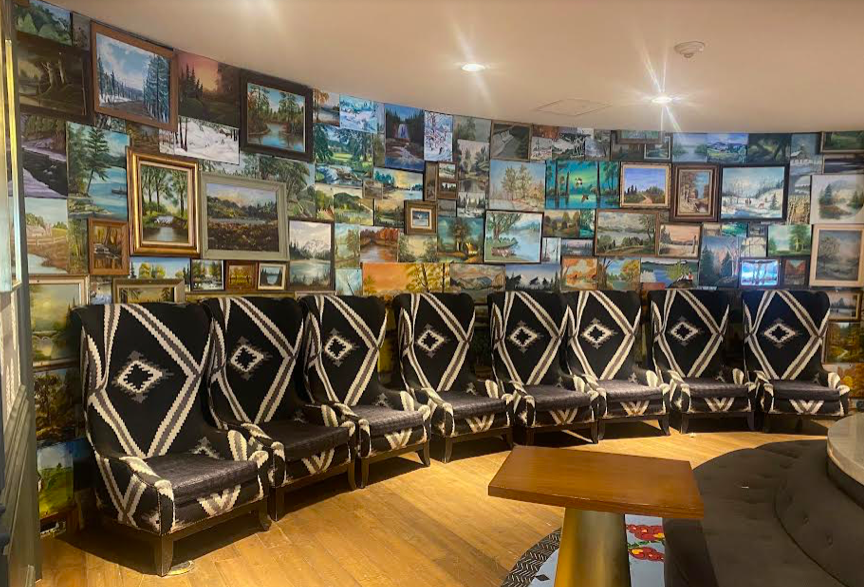Jeanne Fox Alston
Your Space Made to Order

I’m a professional organizer, not an interior designer. But whenever I see new ways to refresh and enliven one’s living space, I take note.
Earlier this year, I flew into the Minneapolis-St. Paul airport on a bitterly cold and snowy day. A long-time family friend was being honored by the University of Minnesota for her years of leadership and service. I was looking forward to helping to celebrate her accomplishments while reconnecting with her and her family.
I had booked a room at Graduate Minnesota, the closest hotel I could find to the venue for the event. As I walked into Graduate Minnesota, I took note of the comfy and worn leather arm chairs, the long tables of students working on their computers and, on the front of the check-in counter, wood rounds cut from tree trunks. This was no generic, cookie-cutter hotel. Instead, the vibe was that of a cozy lodge.
I had planned to explore the campus after checking into my room. But, as I observed the swirling snow outside, I chickened out, deciding instead to have a leisurely lunch at the restaurant just off the lobby. Then, as I began walking back to the main lobby, I saw a long, curved wall.
Along the base of the wall was a row of tall armchairs upholstered in black and white Native American-inspired blankets. But the showstopper was what was above the chairs, a gallery wall unlike any I had ever seen: landscape paintings of all different sizes, and so many (two hundred? more?) that not a single inch of bare wall was visible. They were simply framed and, true to Minnesota’s reputation as “the land of 10,000 lakes,” just about every painting featured a beautiful lake.
Questions sprang to mind. Who was the inspired genius behind this amazing display? Were these all paintings of Minnesota landscapes? Did it matter? How and where were these paintings found. Thrift stores? And how was it possible to hang all these canvases so neatly and beautifully on a curved wall?
But those thoughts fell away as I continued to stare at the wall. I was transported from a busy and noisy lobby to a serene and remote venue, quietly absorbing the beauty and magnificence of the trees, the water, the rocks and the mountains. Those modest paintings created a transcendent experience.
Weeks later, I keep seeing that gallery wall in my mind’s eye. I was moved by it. I’ve since learned that the 20-some Graduate Hotels all are located on or near large college campuses and each has its own unique décor that reflects and pays homage to its surroundings.
I love gallery walls. Indeed, I’ve helped many clients to create them as a way to personalize their spaces and showcase family photos or favorite pieces of art. The gallery wall at Graduate Minnesota showed a different approach (at least to me), namely assembling a wall of art or photos around a central theme.
But here’s why I study interesting interiors and encourage my clients to personalize their homes. First, I’m a visual person and I enjoy seeing anything that's new and different. But my theory is that when we refresh our living spaces, via a new paint color, piece of art or even fresh flowers, doing so increases our enjoyment of our homes. And that, in turn, gives us the motivation to continue to stay organized.
For more information, contact Jeanne Fox Alston.